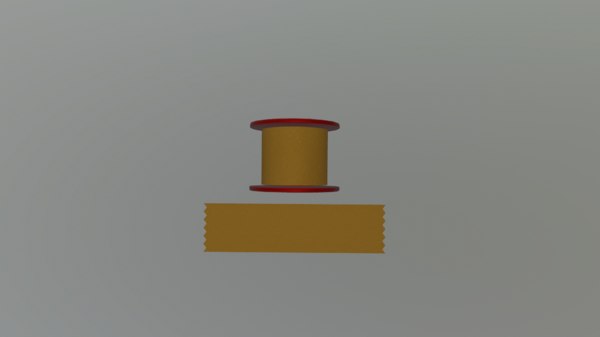Lately, I have been seeing quite a lot of sewists make their very own underwear, and it’s actually inspiring me-but there’s one detail that I don’t want to incorporate in my me-made underwear: jacquard elastic webbing.
If you’ve ever made underwear before, you probably know that many finishing strategies for the legholes and waistline embody elastic webbing, either fold-over elastic, picot, and even braided elastic encased in fabric. I don’t learn about you, but none of my ready-to-put on underwear have elastic within the legs-and typically they don’t within the waist both. That is the kind of underwear I like greatest.
So, the place does this depart me? I’m not a fan of elastic in my underwear because it feels too restrictive, however I want to make my own underwear. That is the place knit bands come into play for me. I’m going to point out you learn how to swap elastic for a knit band to complete your underwear!
You’ll Need:
– Fabric
– Pattern
– Tape measure
– Ruler
– Extra paper
– Pencil
Easy methods to Draft and Sew a Knit Band
Let’s do that.
Be certain that your fabric meets the stretch requirements acknowledged within the pattern you’re using. I’m making the Sophie Hines Median Knickers pattern, and it requires 50%-75% stretch.
If you’re using a Seamwork sample, it includes a stretch guide to help you see if the fabric you need to use has enough stretch in it. Listed below are some Seamwork patterns you need to use:
– The Geneva panties are a classic selection, particularly in order for you to make use of stretch lace.
– The Kaye shorts are excellent for biker-short model underwear.
– The Dana underwear would work well with a knit band instead of elastic.
– The brand new (and free!) Flo period underwear. You can also make these without the absorbent fabric if you wish to make a comfy pair of everyday underwear.
Cut your pattern out and sew together all the fundamental pieces. Here is my constructed garment except for the leg holes and waist.
Measure the leg opening and waistline that will help you resolve how long your knit bands should be. My leg holes turned out to be 27 1/2 inches, and my waist is 34 1/2 inches. Next, I will have to do some math.
Ugh, math!? I do know-it’s not my favorite, however we received this!
You want some math as a result of if you happen to cut the knit band the same size as the leg gap or waistline, it won’t have the stretch to imitate the elastic end. If you liked this article therefore you would like to collect more info about woven elastic band (please click the following article) please visit the web site. You want to seek out the perfect quantity of adverse ease on your knit band to stay in place and match securely-but comfortably-to your body.
I consulted with Wallis, our patternmaker-and the queen of knits-here at Seamwork, and she suggested me to follow a easy equation when making knit bands for closures. Make the knit band 90% of the overall circumference of the opening.
I would like to emphasise that 90% is a suggestion and a superb place to start! Depending on your fabric’s restoration, you might must do some testing to get the fitting circumference. You’ll be able to at all times baste your band to your underwear to examine the match first.
So, since my leg hole is 27 1/2 inches, my equation is: 27.5 x .9 = 24.75. I reduce my leg bands at 24 3/4 inches.
My waist measured 34 1/2 inches, my equation is: 34.5 x .9 = 31. I minimize my waistband at 31 inches.
I need my bands to be a bit wider, so I lower them 2 inches wide, however you may make them a bit narrower or wider. Try to not go beneath 1 1/2 inches or over 2 1/2 inches. When you cut your bands too slender, they might have some more bulk at the seam allowance. In case you lower them too broad, you might have problems fitting your gusset.
Sew the two quick ends of your knit band collectively. Press the seam to one aspect. Helpful trace: If you’re utilizing a serger, use only one needle to chop down on bulk when serging.
Press the band in half lengthwise.
With flawed sides collectively, baste the raw edge.
With proper sides collectively, pin the knit band evenly alongside the leg hole. You will have to stretch the knit band as you go.
A trick to evenly pinning the band is to mark your band in quarters. Then, mark your leghole and waistline in quarters. Stretch to match the quarter markings and pin in place, evenly distributing the band.
Using a serger or a zigzag stitch, sew the knit band to the underwear at 3/eight inch. Stretch the knit band as you go to ease it in. You possibly can see this in motion on this video tutorial for adding a knit band on our YouTube channel.
Press the seam allowance towards the underwear and topstitch with a slender zigzag to carry the seam allowance in place.
Now repeat that very same process on your different leg gap and waistband and marvel on the no-elastic undies you simply made! Great job!
Taylor Pruitt
UX Designer
Taylor has a watch for design. Because the Product Manager for Seamwork, she desires to make sure your on-line experiences are fun and pleasurable.




